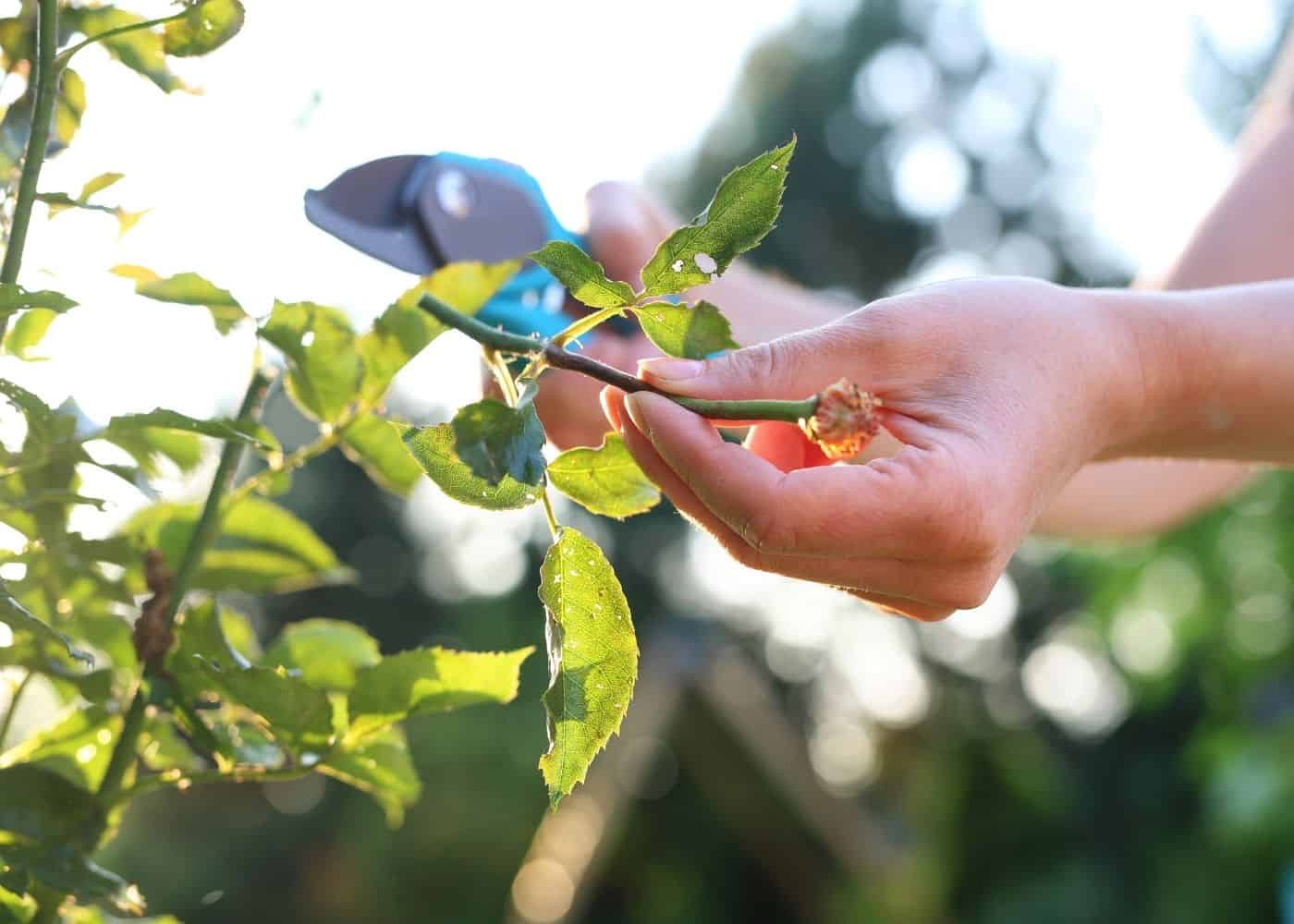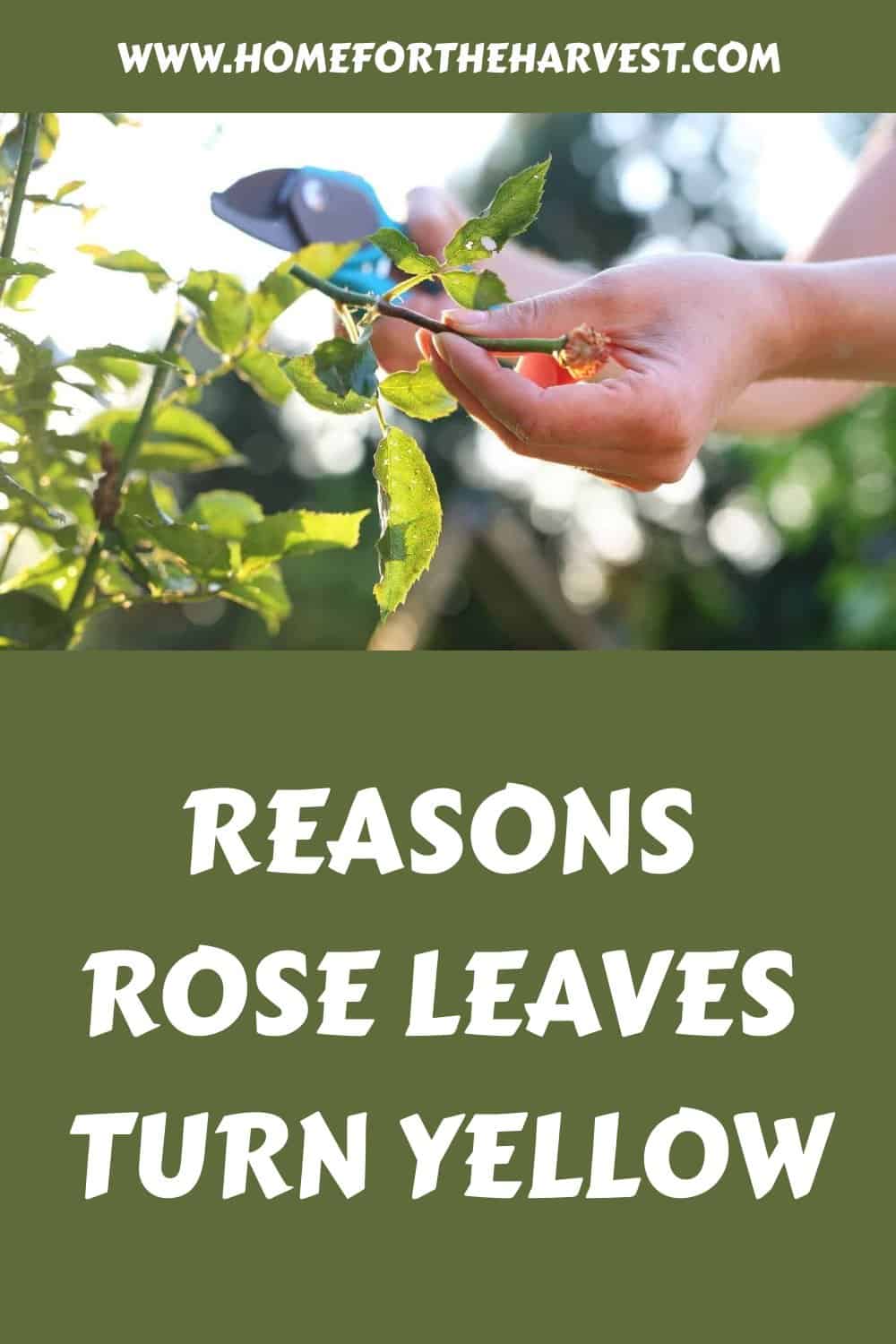Rose leaves turn yellow for a variety of reasons, including fungal disease, insect pests, and environmental stressors. Additional symptoms of yellowing leaves on roses beyond leaf discoloration include wilting and potentially eventual death of the plant.
To treat and prevent yellowing leaves on roses, it is important to identify the underlying cause and take appropriate action. Common treatments include improving drainage, watering deeply and consistently, and applying organic fungicides. Prevention is key, so be sure to focus on overall plant health and keep an eye out for pests and diseases.
Why rose leaves turn yellow
Rose leaves turn yellow for a number of reasons, including disease, pests, and environmental stressors. The most common cause of yellowing rose leaves related to basic rose care is a lack of water. When the soil around your rose bush is too dry, the leaves will begin to turn yellow in an effort to conserve moisture. Other causes of yellowing rose leaves include fungal diseases, pests, and nutrient deficiencies.
Once rose leaves turn yellow, they typically wilt and fall off the plant prematurely. Early loss of leaves has a negative effect on the plant’s ability to photosynthesize and create the energy required to produce the beautiful blooms we all love.
1. Yellow rose leaves due to lack of water
If your rose bush is suffering from a lack of water, the first symptom you will notice is wilting leaves. The leaves will be limp and droopy, and eventually, they will turn yellow. If you suspect that your rose bush needs more water, check the soil around the plant to see if it is dry. If it is, water the plant deeply.
2. Yellow rose leaves caused by plant disease
If your rose bush has yellowing leaves due to a fungal disease, you may also notice spots on the leaves. These blotchy spots are typically black or brown and may be raised. In addition to yellowing and spots, the leaves may also curl or twist and fall off the plant. If you think your rose bush has this “Black Spot” fungal disease, take a sample of the affected leaves to your local nursery or Cooperative Extension office for diagnosis.
Black spot is commonly caused by Diplocarpon rosae fungus. It usually appears as the first flush of flowers starts to fade, and may persist all season long. This fungus can be treated with organic fungicide, although it will require frequent applications (typically weekly or biweekly) to control the disease.
More effective measures include general plant health and garden hygiene. Ensure plants are getting at least 6 hours of direct sun, with morning sun being preferable to afternoon sun. Feed plants with a high-quality rose fertilizer, mulch with compost and hardwood mulch, and water deeply at the base of the plant on a regular basis (preferably with drip irrigation). Also, take care to prune roses regularly each year (roses are usually pruned in early spring).
In addition to overall plant health and treatment with fungicides, some gardeners choose to plant disease-resistant varieties of roses to minimize the effect of plant diseases and necessary control measures in their gardens. Some disease-resistant varieties include ‘Knock Out’ series roses, ‘Easy Elegance’ series roses, ‘Drift’ series roses, ‘Oso Happy’ and ‘Oso Easy’ series roses, ‘Carefree’ roses, ‘Kosmos’, ‘Garden Delight’, ‘Laguna’, ‘Fiji’, ‘Summer Sun’, ‘Cinderella’, ‘Poseidon’, ‘Golden Gate’, ‘Larissa’, ‘Morning Magic’, and ‘Pomponella’.
3. Yellow rose leaves caused by pests
Pests can also cause yellowing rose leaves. One of the most common pests that affect roses is aphids. Aphids are small, pear-shaped insects that feed on plant sap. They typically congregate and feed on the undersides of young leaves, and they can cause the leaves to turn yellow. If you suspect your rose bush has aphids, look for these pests on the undersides of the leaves. You can remove them by spraying the plant with water or an organic insecticidal soap solution.
Spider mites are another sap-sucking pest insect that can cause yellowing wilted leaves. Spider mites also live on the underside of leaves, and multiply very quickly in hot, dry conditions. Leaves affected by spider mites are usually a grey-yellow or a bronze-yellow tone. There will also be fine webbing under the leaves if there are quite a few mites. Spider mites can be treated with insecticidal soap or neem oil after spraying off the majority of the pests with the hose.
In addition to regular observation for pests and quick treatment if observed, attracting beneficial insects can help to reduce pest pressure in your rose garden. Many plants that make great companion plants for roses are also wonderful for attracting beneficial insectivores, including ladybugs, pirate bugs, lacewings, parasitic wasps, and syrphid flies. Some excellent choices for rose companion plants include allium, monarda, sedum, veronica, cosmos, lavender, and rudbeckia.
4. Yellow rose leaves due to environmental stress
Environmental stressors such as extreme temperatures, drought, and frost can also cause rose leaves to turn yellow. If your rose bush is exposed to any of these stressors, the leaves may turn yellow and eventually drop off the plant.
To protect your rose bush from environmental stressors, make sure to plant it in an area that receives partial afternoon shade in hotter climates and has well-drained soil. Rose bushes in very hot and dry climates often go semi-dormant during the heat of midsummer but put on new leaf growth in late summer as temperatures begin to cool.
Rose bushes lose their leaves in the fall in all but the warmest climates. Expect to see yellowing or bronzed leaves in autumn before the plant drops its leaves and goes into normal winter dormancy.







